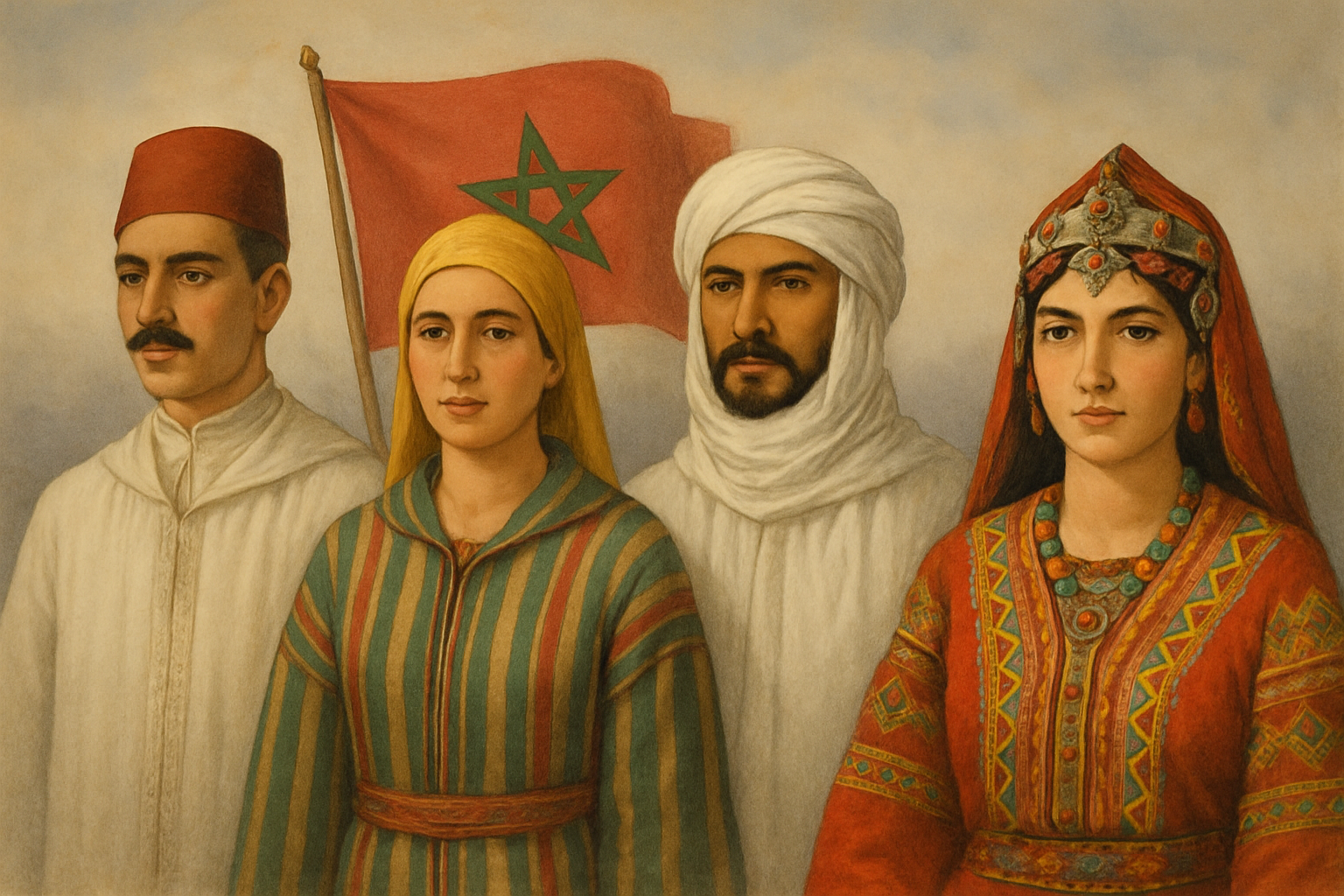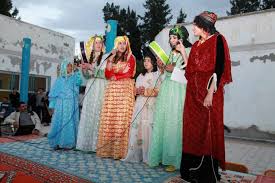
Morocco’s cultural tapestry is as colorful and rich as its landscapes, ranging from the coastal cities to the high Atlas Mountains, and into the vast Saharan dunes. One of the most visible and meaningful expressions of this cultural diversity is traditional clothing. These garments are not merely functional—they are vessels of history, identity, and artistry. The colors, patterns, fabrics, and accessories all tell stories about the people who wear them, the climates they endure, and the heritage they cherish.
Each region in Morocco has developed its own distinct style of dress, shaped by local traditions, geography, and even foreign influences. From the bold and symbolic garments of the Rif Mountains to the beautifully woven cloaks of the High Atlas and the practical yet majestic attire of the Sahara, traditional Moroccan outfits reflect the diversity of its people. In this article, we explore how regional identities are stitched into the very fabric of Moroccan clothing culture.
The Rif Mountains Attire

In the northern region of the Rif Mountains, traditional dress is both vibrant and symbolic. Women often wear long, colorful striped skirts known as "Mendil," wrapped around the waist and paired with embroidered blouses. A signature feature is the conical straw hat, or "Chachia," decorated with woolen tassels in bright red, green, and blue—colors believed to carry protective significance. These garments not only reflect local aesthetics but are also rooted in Amazigh (Berber) traditions.
Men in the Rif region traditionally wear woolen djellabas with wide sleeves, often woven by hand. The clothing here is practical for the mountain climate—warm in the cold seasons, yet breathable in the summer. The designs tend to be simple, but the quality of wool and craftsmanship stands out. The way garments are worn can signify social status, marital status, or even seasonal celebration.
The High Atlas Region Clothing
The people of the High Atlas Mountains, particularly the Amazigh communities, are known for their beautifully handwoven cloaks called "Handira." These garments are usually white or cream in color and richly decorated with silver sequins or wool patterns. Women often wear layers of clothing for warmth and adorn themselves with intricate silver jewelry and colorful scarves or headwraps.
The high elevation and cold winters have influenced the materials used—thick wool, naturally dyed fabrics, and layering techniques are common. Men often wear capes or woolen coats called "Burnous," ideal for insulation and mobility in mountainous terrains. Traditional attire is still worn during festivals and important life events like weddings, keeping ancestral practices alive.
Saharan Nomadic Style
In the Moroccan Sahara, clothing serves as protection against the extreme sun and shifting sands. The "Daraa" is a long, flowing robe worn by men, typically in shades of indigo or sky blue, designed to keep the wearer cool and allow air circulation. Women wear beautifully draped "Mellhafa"—a large piece of fabric wrapped around the body, combining elegance with utility.
The materials used in Saharan dress are usually lightweight cotton or linen, ideal for the desert climate. Head coverings like the "Cheche" or turban are essential for both men and women, guarding against sun exposure and dust. These garments also symbolize the identity of Saharan tribes and are often passed down through generations.
Fez and the Andalusian Influence
Fez, one of Morocco’s oldest cities, reflects deep Andalusian influence in its traditional clothing. Men often wear finely tailored djellabas and the iconic red "Fez" hat, also known as the "Tarbouche." These garments signal refinement and scholarly legacy, often worn during religious holidays and academic events.
Women in Fez are known for their luxurious caftans and takchitas, made with silk, velvet, and gold thread embroidery. These elegant outfits are accompanied by delicate belts and elaborate jewelry. The craftsmanship in Fez is renowned, with tailors and artisans preserving techniques that date back centuries.
Marrakech Traditional Elegance
As a cultural crossroads, Marrakech blends Berber, Arab, and Sub-Saharan influences in its traditional clothing. Women’s attire often includes the "Takchita"—a two-piece gown made with exquisite fabric and ornate embellishments, especially popular during weddings and official ceremonies. The style here leans toward sophistication and luxury.
Men from the region often wear white or cream-colored djellabas and soft leather slippers known as "Balgha." The city’s reputation as a fashion capital is reflected in how traditional dress is modernized yet remains respectful of heritage. Marrakech designers frequently reinterpret these outfits for global runways.
Middle Atlas and Amazigh Symbols
In the Middle Atlas, especially among Amazigh groups, clothing is rich with symbolism. Women wear layered dresses decorated with traditional tattoos, beads, and coins, which often serve as family heirlooms. Shawls called "Tizerzit" are fastened with silver brooches and draped over the shoulders with ceremonial pride.
Men favor garments made of dark wool, usually black or brown, reflecting the earthy colors of the environment. The designs often include geometric Amazigh motifs, expressing identity and spiritual belief. Clothing here is not just for warmth or beauty—it is an archive of the past and a living expression of culture.
Southern Coastal Styles
Along Morocco’s southern coasts, like in Agadir and Essaouira, the attire reflects both oceanic life and Saharan trade routes. Light cotton garments, often dyed with natural indigo, dominate the local fashion. Men wear relaxed tunics and turbans, while women opt for flowing dresses adorned with seashell or coral jewelry.
These coastal outfits are often more colorful and airy, capturing the spirit of maritime life. Celebratory clothing may incorporate gold-threaded patterns and bold prints, especially during music festivals or community events. The sea, the wind, and trade have shaped a unique clothing identity in this region.